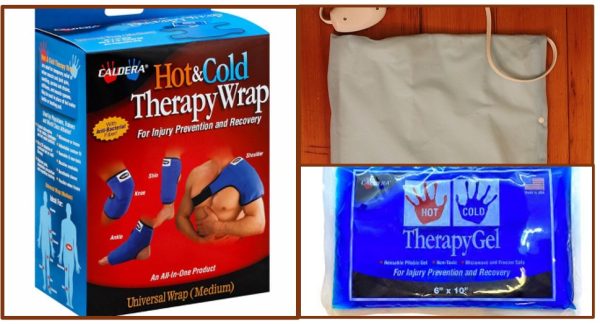
Cold And Heat Pads – When To Use?
Using ice and heat for injuries and pain management depends on the type and timing of the injury or condition. Sometimes it could be confusing when to use ice or heat treatment to bring normalcy to aching body.
Here are some guidelines regarding when to use ice or heating pad:
When to use ice?
Ice is primarily used to reduce inflammation and numb pain. It is most effective in the acute phase of an injury, which is typically the first 24-48 hours.
- Acute injuries: Use ice immediately after an acute injury such as a sprain, strain, or contusion. Ice helps reduce swelling and inflammation by constricting blood vessels and slowing down blood flow to the injured area.
- Swelling and inflammation: Apply ice to areas with significant swelling or inflammation. This includes conditions like tendinitis or bursitis.
- Pain relief: Ice can help numb sharp pain and reduce muscle spasms.
- Post acute phase of injury: When a person feels discomfort due to inflammation and pain, continue using ice to manage any remaining inflammation and pain.
How to apply ice:
- Use an ice pack, frozen gel pack, or a bag of frozen vegetables wrapped in a thin towel.
- Apply ice for 15-20 minutes at a time, several times a day.
- Avoid applying ice directly to the skin to prevent frostbite.
Having cold compress at home helps in following conditions:
- Injury due to hitting or banging leg, knee, hand on hard surface
- Knee pain due to sudden twisting
- Elbow pain due to injury
- Sprain in ankle
- After touching hot surface accidentally
When to use heat?
Heat is used to relax and loosen tissues and to stimulate blood flow to the area. It is most effective for chronic conditions and muscle tightness.
- Chronic pain like arthritis and tendinitis: Use heat for chronic pain, such as lower back pain or arthritis. Heat helps relax muscles and joints.
- Stiffness and soreness: Apply heat to areas where you feel soreness and stiffness. Heat reduces soreness and improves flexibility by reducing stiffness.
- Muscle spasms and tension: Apply heat to areas with muscle spasms, tension, or cramps. Heat promotes relaxation and can alleviate discomfort.
- Pre-activity: Use heat before physical activity to warm up muscles and increase blood flow, reducing the risk of injury.
- Post -acute phase of injury: Begin using heat to relax muscles, improve blood flow, and reduce stiffness.
How to apply heat?
- Use a heating pad, hot water bottle, warm towel, or take a warm bath.
- Apply heat for 15-20 minutes at a time. Ensure the heat source is warm, not hot, to avoid burns.
- Do not use heat on areas with open wounds or where there is swelling.
Having Hot compress at home is helpful in these conditions
- For arthritis pain
- For fibromyalgia
- Tissue and ligament pain due to old injury
- Nerve pain or nerve damage
- Lower back pain
- Cancer pain
Tips to use cold and heat pads
Timing: For acute injuries, start with ice for the first 24-48 hours to reduce swelling. After this period, you may switch to heat to help relax muscles and improve blood flow.
Combination therapy: In some cases, alternating between ice and heat (contrast therapy) can be beneficial, such as in chronic injuries where both inflammation and stiffness are present.
Always consult with a healthcare professional if you are unsure whether to use ice or heat for your specific injury or condition. Some injuries may require different treatments or approaches.
Using ice and heat appropriately can aid in recovery and provide relief from pain and discomfort.
Image credit: Jen, CC BY-SA 3.0 https://creativecommons.org/licenses/by-sa/3.0, via Wikimedia Commons& Wegman’s store
Author: Sumana Rao | Posted on: August 8, 2024
« Commonly Ignored Cancer Symptoms In Men Keep Lymph Fluid Circulating For Good Health »






















Write a comment